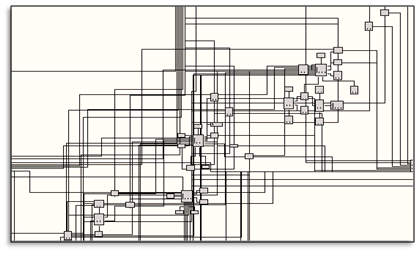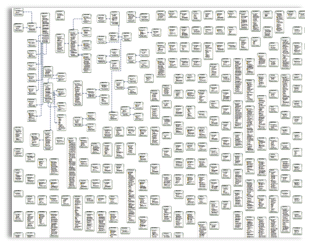Microsoft has a long history of being visual. They've made quite a bit of money implementing graphical user interfaces everywhere – from operating system products to database servers, and of course, developer products. What would Visual Studio be if it wasn't visual?
And oh how visual it is! Visual Studio includes a potpourri of visualization tools. There are class diagrams, form designers, data designers, server explorers, schema designers, and more. I want to classify all these visual tools into one of two categories. The first category includes all the visual tools that build user interfaces – the WinForms and WebForms designers, for instance. The second category includes everything else.
Visual tools that fall into the first category, the UI builders, are special because they never need to scale. Nobody is building a Windows app for 5,000 x 5,000 pixel screens. Nobody is building web forms with 5,000 textbox controls. At least I hope not. You can get a pretty good sense of when you are going to overwhelm a user just by looking at the designer screen.
Visual tools that fall into the second category have to cover a wide range of scenarios, and they need to scale. I stumbled across an 8-year-old technical report today entitled "Visual Scalability". The report defines visual scalability as the "capability of visualization tools to display large data sets". Although this report has demographics data in mind, you can also think of large data sets as databases with a large number of tables, or libraries with a large number of classes - these are the datasets that Visual Studio works with, and as the datasets grow, the tools fall down.
Here is an excerpt of a screenshot for an Analysis Services project I had to work with recently:

Here is an excerpt of an Entity Data model screenshot I fiddled with for a medical database:

These are just two samples where the visual tools don't scale and inflict pain. They are difficult to navigate, and impossible to search. The layout algorithms don't function well on these large datasets, and number of mouse clicks required to make simple changes is astronomical. The best you can do is jump into the gnarly XML that hides behind the visual representation.
I'm wondering if the future will see a reversal in the number of visual tools trying to enter our development workflow. Perhaps textual representations, like DSLs in IronRuby, will be the trick.

 OdeToCode by K. Scott Allen
OdeToCode by K. Scott Allen